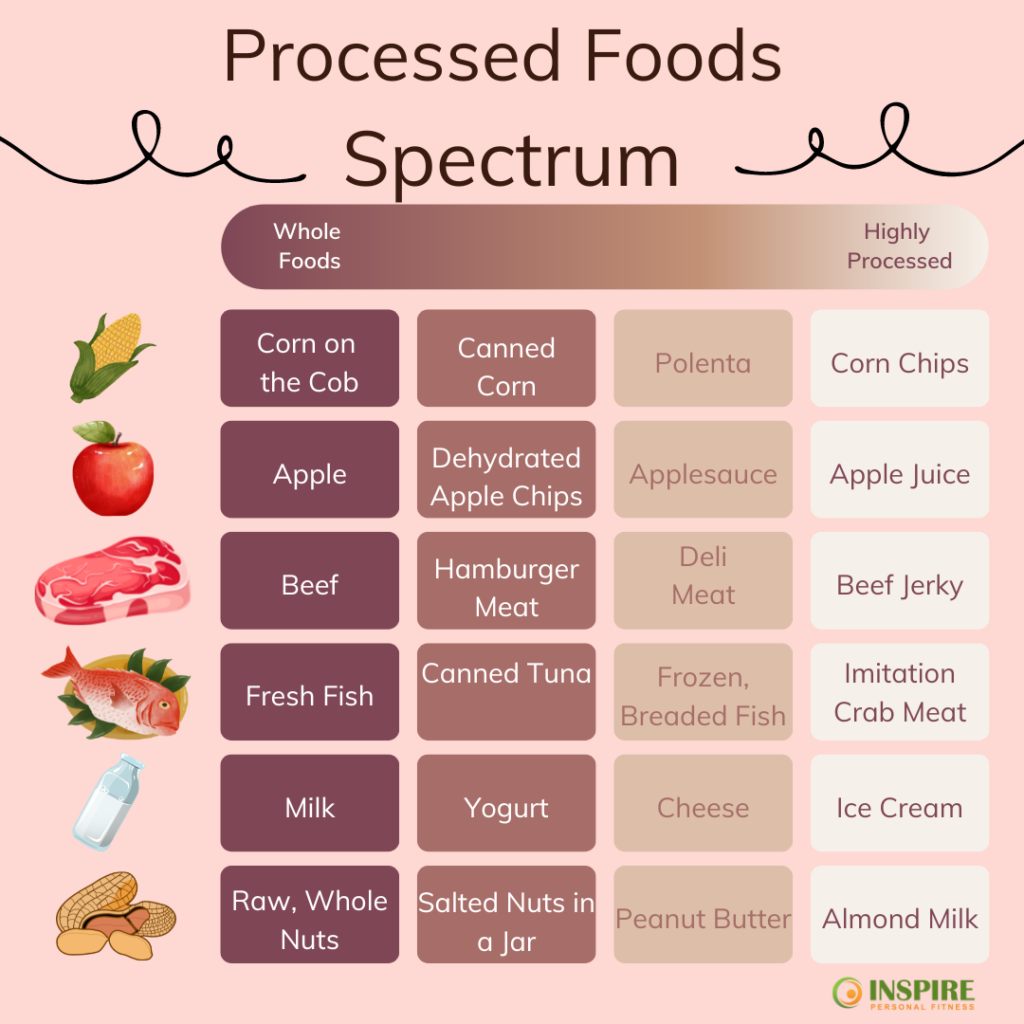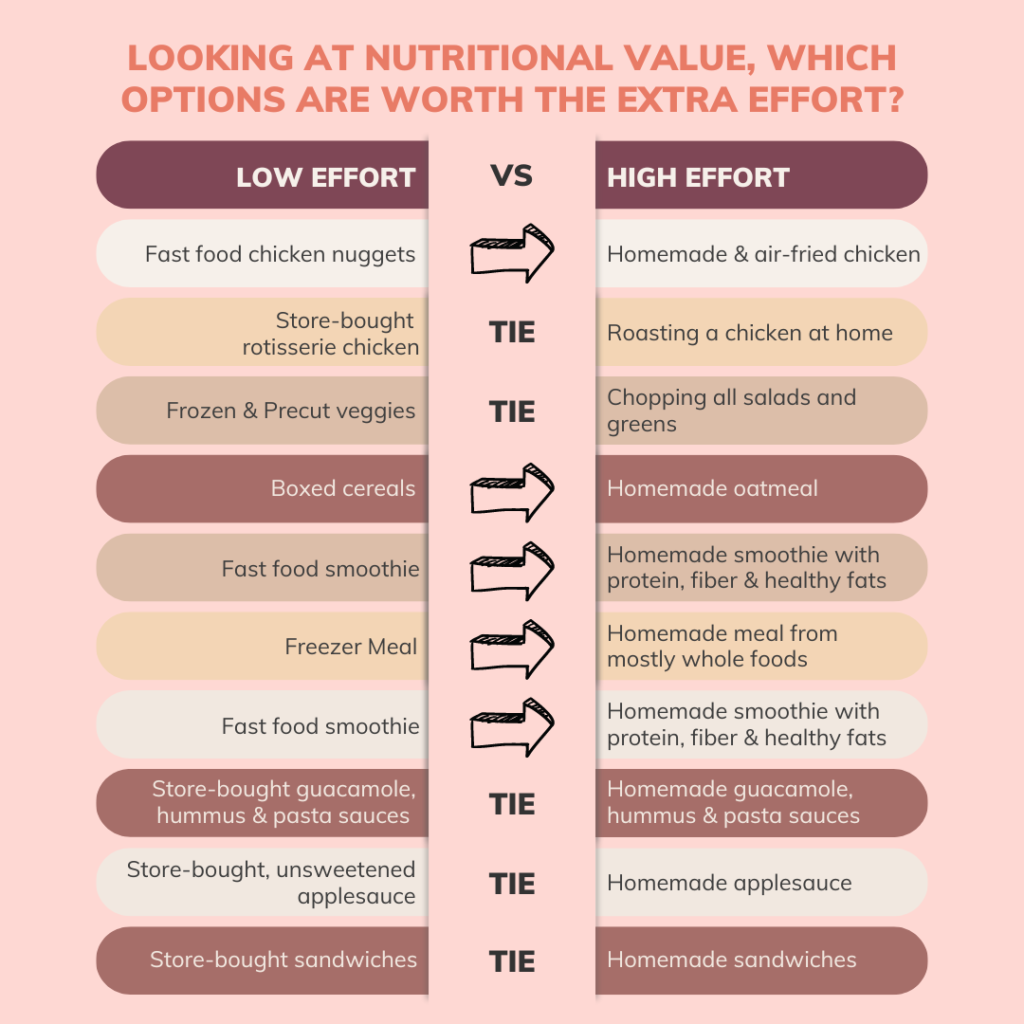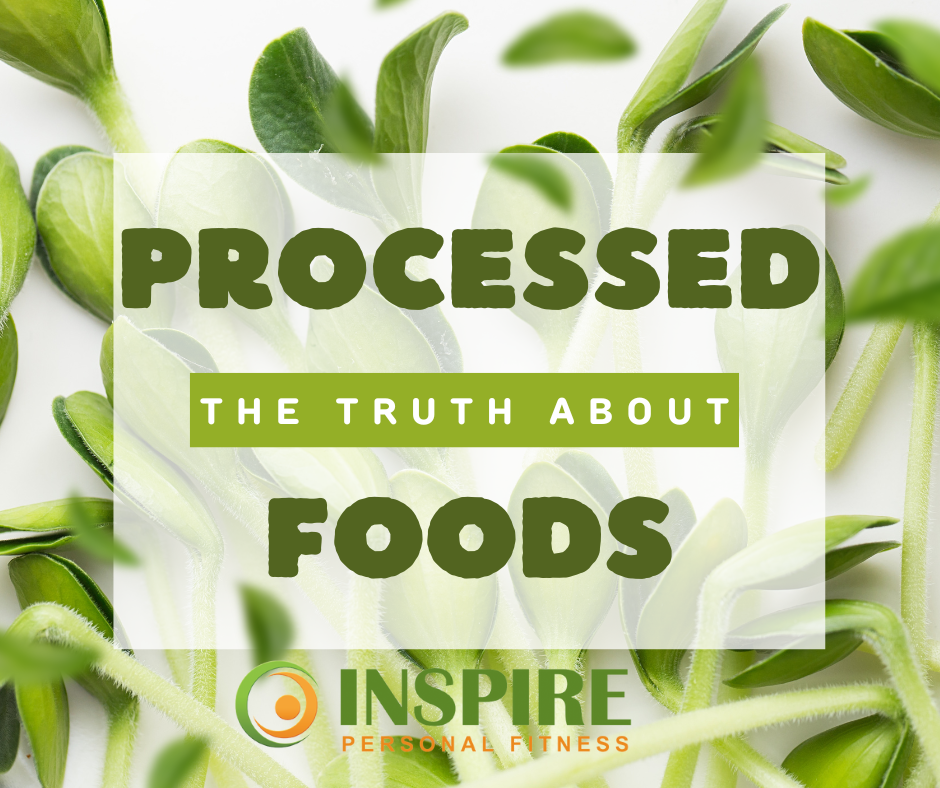Hello everyone!
Carly here.
Hey friends! Last week I spoke about processed foods, and I mentioned that this week I would be chatting in more detail about the processed food “spectrum”, and what some better options would be.
So again to recap from last week:
Whole Foods – the form they are found in nature, or very close to it.
Minimally Processed – have been slightly altered without substantially changing the nutritional content
Moderately Processed – have been altered more significantly, often reducing nutritional value by removing or adding components.
Highly Processed – barely resemble their whole-food origins, and have minimal nutritional value
Now – I have to clarify – because a processed food is defined as changing a food from its natural state, the simple act of us (the consumer) cooking, freezing, smoking, cutting, grinding, salting, cooking, etc our foods, we actually are PROCESSING them, but what I am referring to here is the state in which we PURCHASE our foods.
I made this infographic to illustrate some examples what I mean by processed foods being on a spectrum:

| Now of course, this is just a small representation, and I definitely did not portray the absolute least healthy version in some of the options (ex. high fructose corn syrup for corn). But this is to show you that foods that we often consider “healthy” (ex. almond milk) are still often highly processed, and ultimately, very far from their original form. There are healthier and less healthy options within each of these options depending on which brand you choose (ex. you might find apple juice with or without added sugar, or peanut butter with hydrogenated oils or regular oils). So how do you choose which is the better option? Which choices are worth the extra effort to make yourself, and which options might be best to purchase packaged? Here is another infographic I made to help illustrate which options might be best when deciding between low and high effort foods. As you can see, many store bought items don’t necessarily hold a higher nutritional value than homemade versions. (This is all brand dependent of course, as there are often store bought items with more or less processed foods, and more or less sodium, preservatives, etc.) Convenience is a huge determining factor for many of our meals, so this is worth examining. |

As always, I recommend looking at the ingredients, and as a general rule of thumb, it is preferable to choose foods with ingredients that you know the names of, or are mostly derived from whole foods.
What low effort foods do you use from this list? Are there any swaps you read about today that you might make? I’d love to hear about it.
If you would like to sign up for nutrition coaching or would like more information about how it might benefit you, please email me at carlyleasurefitness@gmail.com and let me know you are interested in working together!
If you aren’t already a member of Inspire, text us at 828-845-4953 and let us know you are ready to begin your strength training journey!
Talk soon,
Carly Leasure, CPT, CNC, WLS



